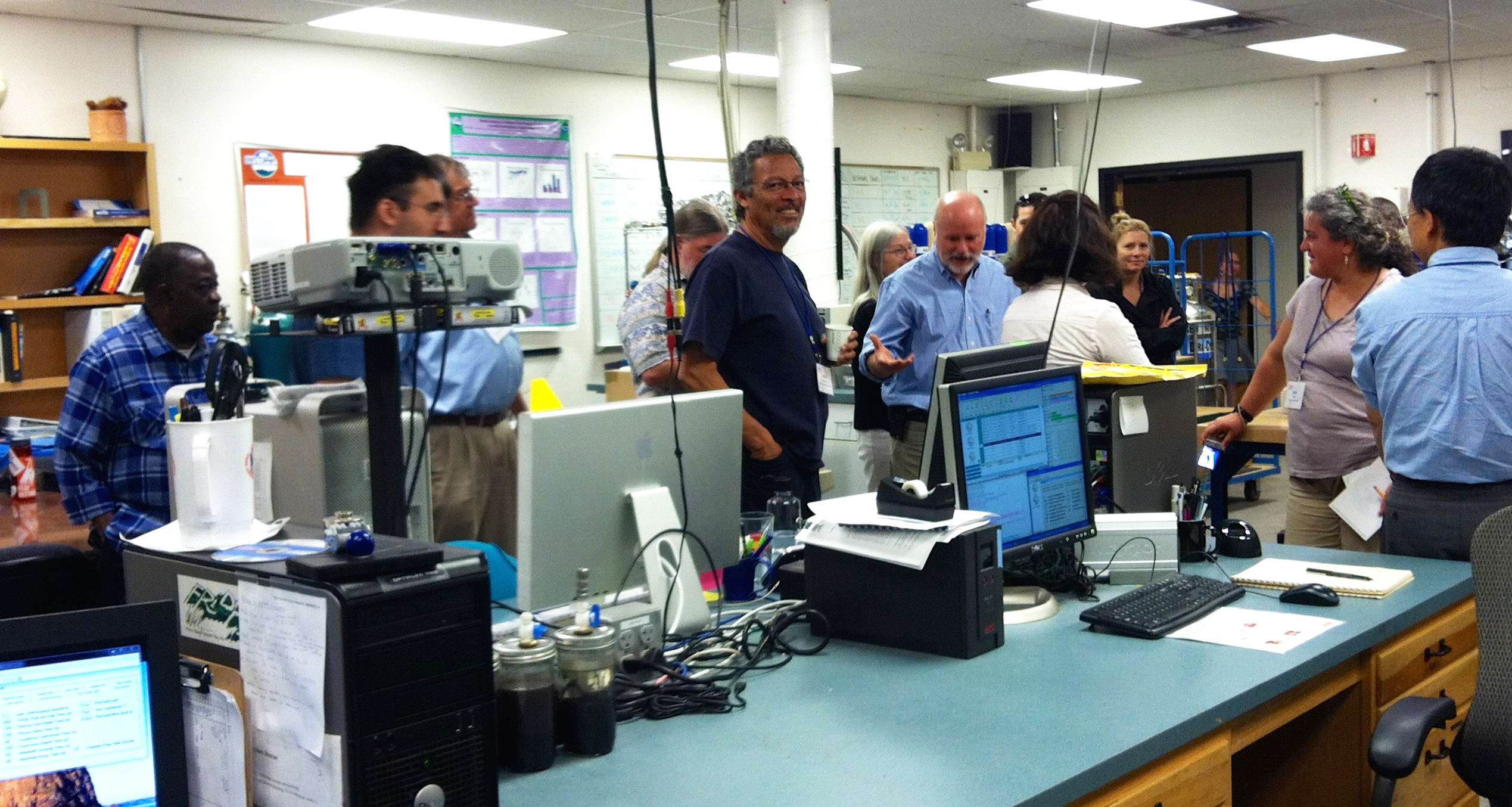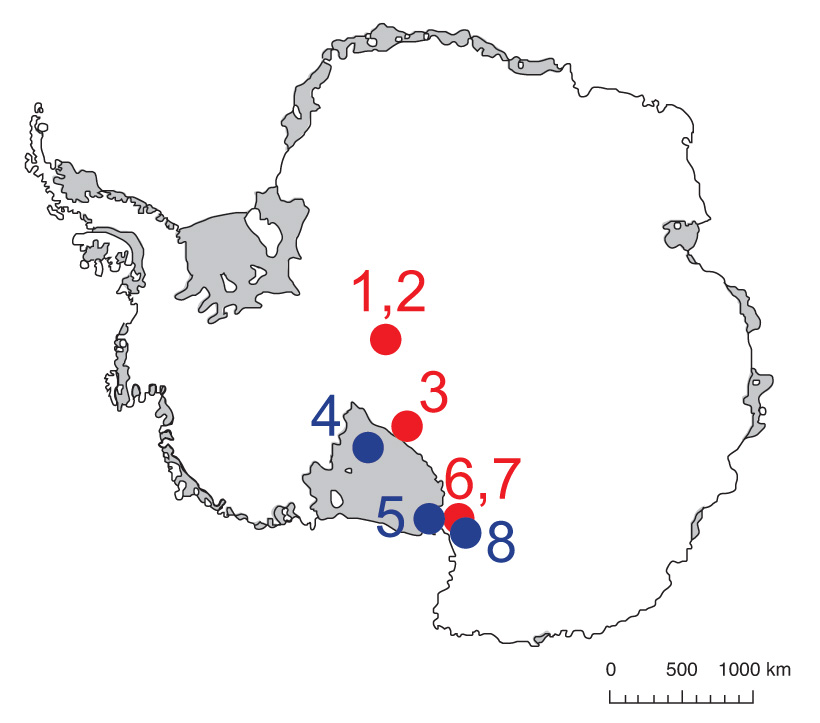During the 2015-2016 Antarctic field season, IDDO is providing support to the following projects:
(1) the South Pole Ice Core project (PI Murat Aydin; I-164-S) will continue its use of the Intermediate Depth Drill to collect a 1500 meter ice core. The ice core will provide an environmental record spanning approximately 40,000 years that will be used to investigate the magnitude and timing of changes in climate and climate forcing through time. The target of 40,000 years spans the transition from the peak of the last glacial period when ice sheets were at their maximum extent – referred to as the Last Glacial Maximum – to the present warm period (the Holocene) called an interglacial. One of the primary motivations for collecting an ice core from the South Pole is that it will provide one of the best trace gas records possible due to the very cold temperatures and low impurity levels at the South Pole. In addition to providing the Intermediate Depth Drill for the project, IDDO is also providing seven drillers to operate the drill throughout the season.
(2) the South Pole Firn Air project (PI Jeff Severinghaus; I-191-S) will use a Badger-Eclipse Drill to incrementally drill two 3-inch diameter holes to 130 meters depth for firn air sampling near the South Pole Ice Core project (PI Murat Aydin; I-164-S) drill site. The primary objective of the project is to construct the gas chronology for the South Pole ice core using inert gases (d15N, d40Ar) and methane in combination with a next-generation firn densification model. Reconstruction of the inert gases and methane in the South Pole ice core will improve the dating of the ice core record, to unprecedented precision, which will enhance the overall scientific return from the ice core.
(3) the Climatic and Glaciological Controls on the Formation of High-Altitude Ablation Moraines project (PI Kathy Licht; G-095-M) will use a hand auger to collect short ice cores from the Mt. Achernar, Transantarctic Mountains, region to recover ice for visual inspection and various types of isotopic analysis. The primary objective of the project is to gain an improved understanding of processes and rates of blue ice moraine formation, as well as identifying the topographic, glaciological, and climatic controls on their evolution. Field data related to ice motion and internal stratigraphy will be collected and used as part of a baseline dataset for a numerical model.
(4) the Crary Ice Rise Shot Holes project (PI Howard Conway; I-323-M) will use an IDDO provided small hot water drill to create shot holes for subsequent seismic work. The project aims to understand the dynamics of ice rises – grounded islands within ice shelves – as they result in a major resistive force on ice flowing from the grounded ice sheets into the ocean. An integrated collection of geophysical observations, including radar and active source seismic experiments, on both the Crary Ice Rise and across its grounding line will be used to address questions about how the ice rise affects ice discharge from the Ross Sea sector of West Antarctica.
(5) the RAID Auger and Packer Test (PI John Goodge; D-551-M) will use a variety of IDDO equipment to test whether a critical component of the Rapid Access Ice Drill (RAID) system, a rubber packer designed to make a seal against the ice borehole wall, functions adequately in natural, glacial ice. A second goal is testing whether an auger can successfully make a hole all the way through the firn layer, which is the intended method of drilling through the firn for RAID operations.
(6) the Carbon-14 of Atmospheric Methane project (PI Vas Petrenko; I-159-M) project will continue its use of the specialized Blue Ice Drill to collect large-diameter ice cores from the blue ice zone on Taylor Glacier that span the last deglaciation and the Early Holocene. The scientists require large-diameter ice cores to extract enough methane to analyze for the rare carbon-14 isotope of methane. The methane analyses will help pinpoint the source(s) of the greenhouse gas during past abrupt climate changes, and will also help scientists understand how modern-day sources of methane may respond to a warming world.
(7) the Climate Controls on Aerosol Fluxes in Taylor Valley project (PI Sarah Aciego; I-184-M) will use the Blue Ice Drill to collect one ice core to a depth of 20 meters for subsequent analysis of dust concentration, dust size distribution, bulk major elements, bulk trace elements, and radiogenic isotope composition. These measurements will be used to deduce the changing climate of the Taylor Dome area from the Last Glacial Maximum through the Holocene.
(8) the Allan Hills Blue Ice Area project (PI John Higgins; I-165-M) will use a Badger-Eclipse Drill to drill one 150 meter depth ice core and one 200 meter depth ice core, as well as several shallow ice cores with a hand auger, to build on recent studies of ancient ice from the area. Previous studies from the area have obtained ice extending, discontinuously, from 0.1 million years ago (Ma) to one Ma. The climate records developed from the newly drilled ice cores will provide new insights into the chemical composition of the atmosphere and Antarctic climate during times of comparable or even greater warmth than the present day.


